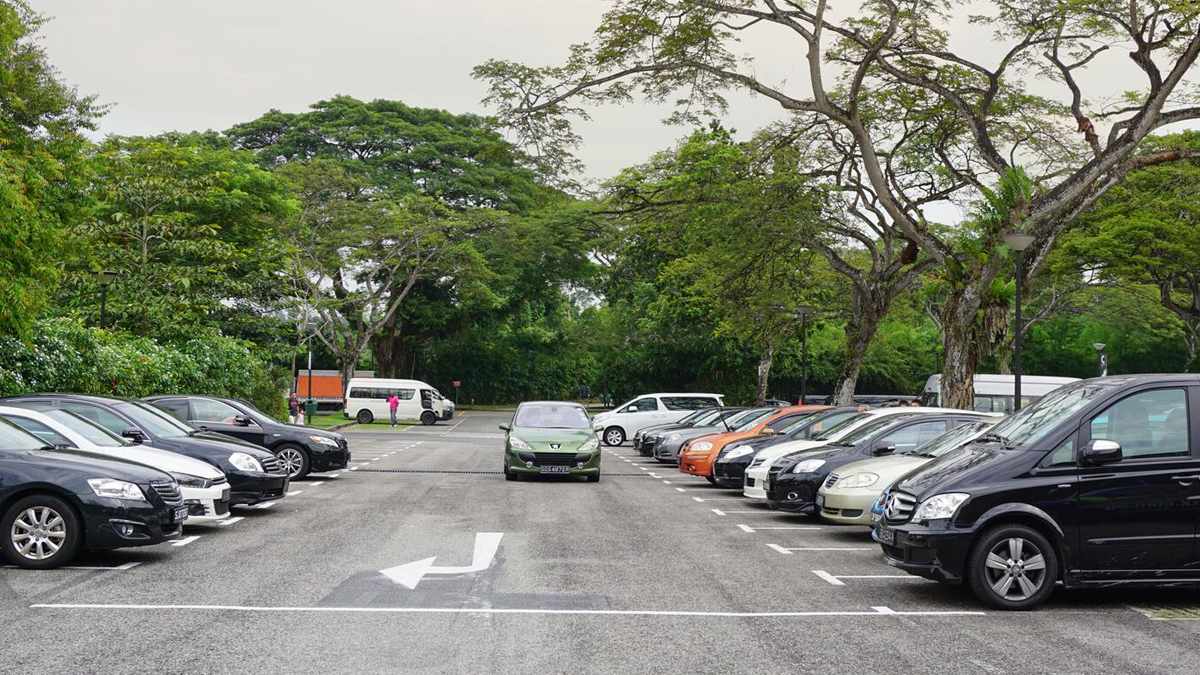We found unknown secrets of Kampong Gelam through OH! Kampong Gelam Art Walk
23/05/2024
9.6 min read
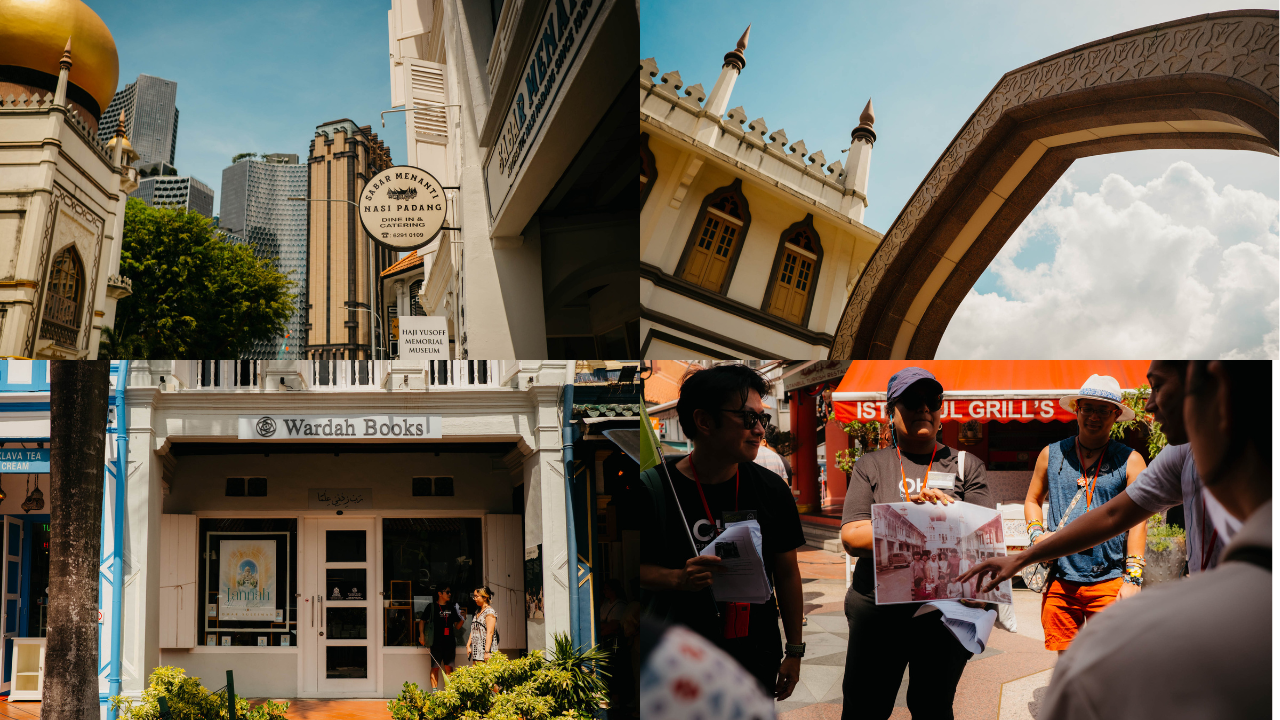
To some, Kampong Gelam is a neighbourhood dotted with hipster cafes, while to others, it’s a nightlife hub. Little did we know before we embarked on the OH! Kampong Gelam Art Walk that we were about to traverse through a not-so-distant time—yet, a time that is forgotten and foreign to many of us.
Our journey began at the Aliwal Arts Centre, once a Chinese school but now a multidisciplinary art centre. As I entered, my gaze immediately reached the colourful banners hanging high on the wall. Each banner vividly illustrated people who wore their occupations and identities like badges of honour. These were the people who once called Kampong Gelam their home and source of livelihood.
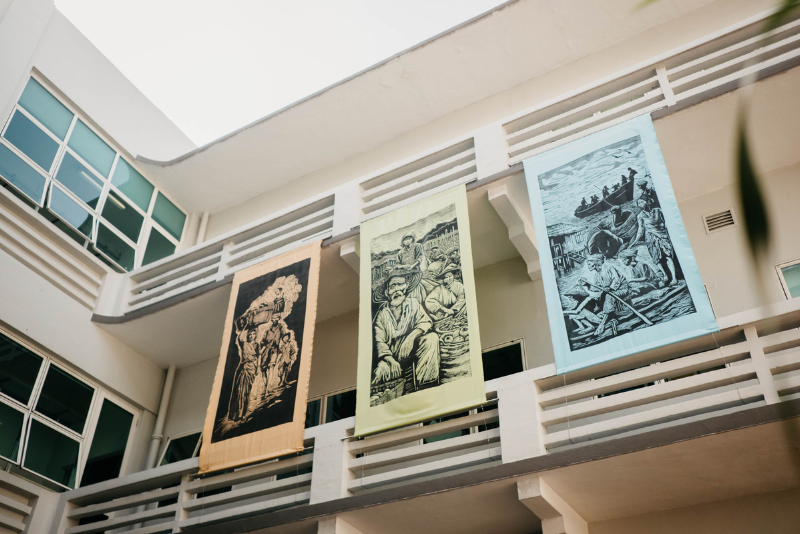
I was glad that my colleague and I were half an hour early. There was a special prologue session before the tour, and we were happy to be part of it. We were handed a card each—one side showed a floor map, whereas the other had an intriguing crossword puzzle. We were also given audio gadgets and a one-sided earphone. I felt like we were secret agents tasked with solving a mystery.
We popped in our earphones and joined the prologue on the second floor. Our first stop was a short stroll across a corridor that housed various maps of the different phases of Kampong Gelam. Some were hand-drawn, while others were printed—but they were all placed next to each other as if to show that each phase was rewritten over the other.
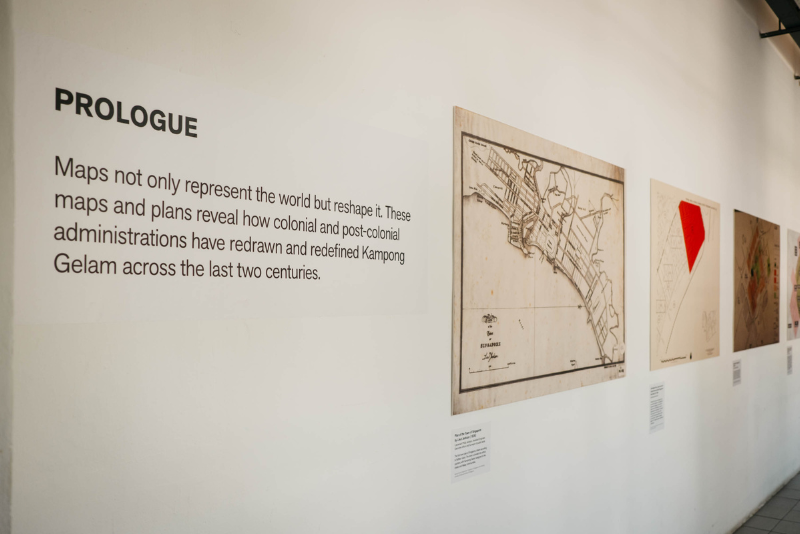
However, one map truly caught my eye. It was displayed in a different room mainly because of its sheer size. As I walked in, I saw it hanging in the centre of the room like a mysterious curtain. Its top left corner read ‘Kampong Gelam, 1949 – 1954’.
This intricate map depicted iconic structures like the Masjid Sultan and Istana Kampong Gelam in hasty yet purposeful strokes of black ink. It also included street names and mentions of more places, some of which no longer exist today. With the morning sun rays streaming through the window, the map looked like a masterpiece frozen in time.
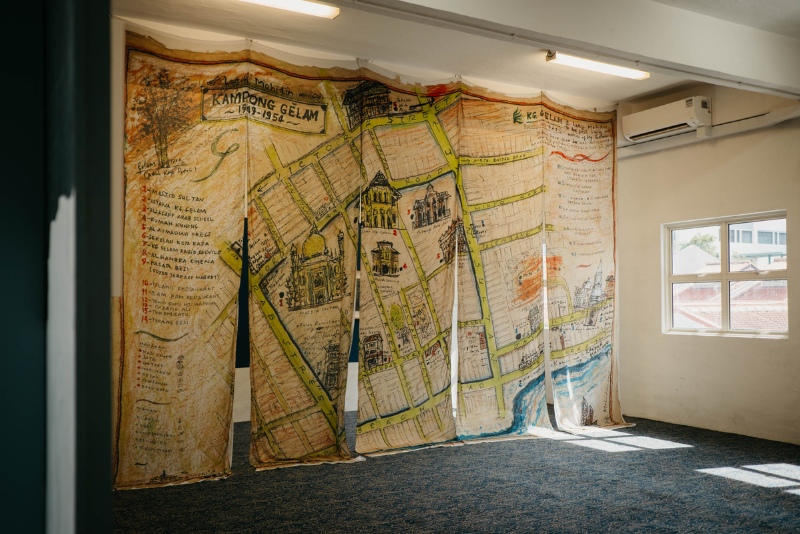
Prying away from the scene wasn’t easy as I was mesmerised, but I had to remind myself that there was so much more to explore. We continued with the rest of the prologue until the official start of the tour. Then, we headed back down to the ground floor, where we met our guides.
Koon Yen was in a casual black t-shirt with the OH! logo, shorts, and shades. He had a bubbly and friendly air to himself. He was accompanied by his co-guide, a lady named Karthika. The duo did a quick audio check and kicked off the walk. I was impressed by Koon Yen who had no script in hand and only a few notes which he hardly even glanced at.
He began by probing our knowledge about Kampong Gelam and introduced us to the walk’s title: Palimpsest. It means a manuscript or page on which later writings have been added. Koon Yen explained that the term reflects the transformation of Kampong Gelam over the years.
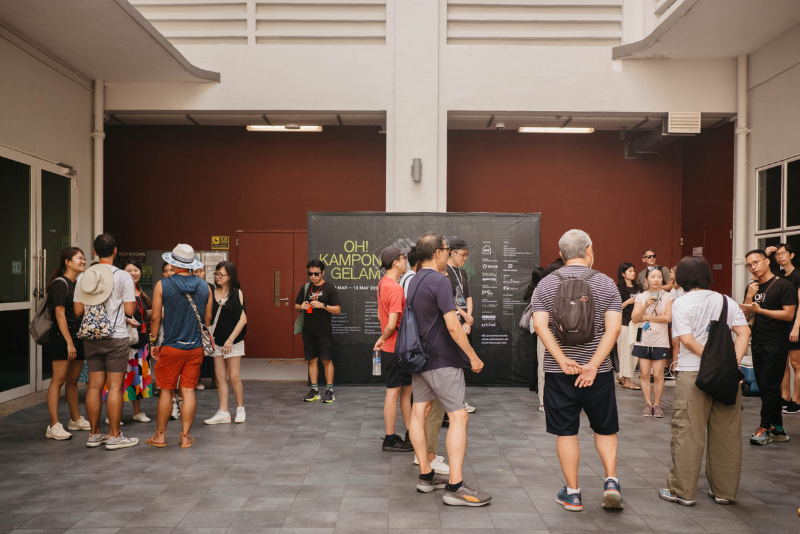
For our first stop, we were taken to a place called ‘Pondok Jawa’ (Javanese lodging house), which was once home to immigrants from Java. We learnt that in its prime days, there were many such lodging houses where people from the same hometowns found shelter. It was there, with their limited resources and a hope for a better future, that they rebuilt their lives from scratch.
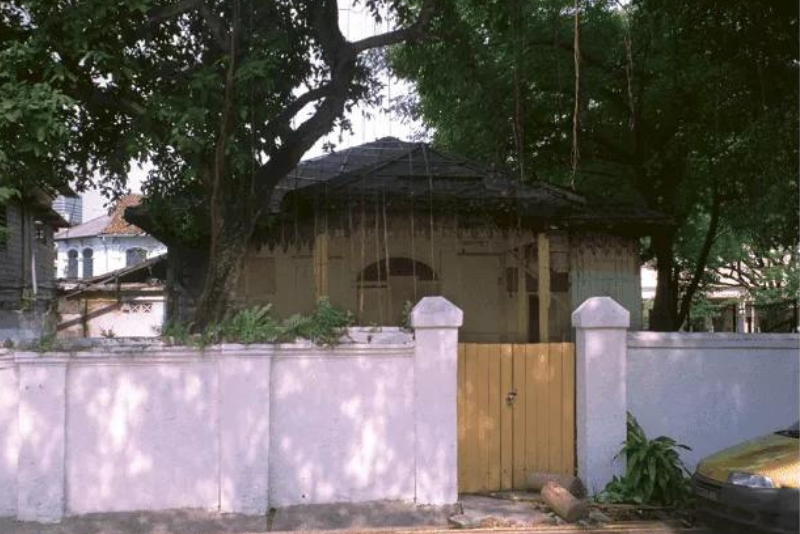
(Photo: Visit Kampong Gelam)
The owner of Pondok Jawa was a master of traditional Javanese art and music. He would organise traditional theatrical dance performances called the Wayang Wong and shadow puppetry, Wayang Kulit. The sounds of the gongs and gamelan resounded within the walls of the pondok, drawing curious spectators from across the island to Kampong Gelam to witness the captivating beauty of Javanese culture.
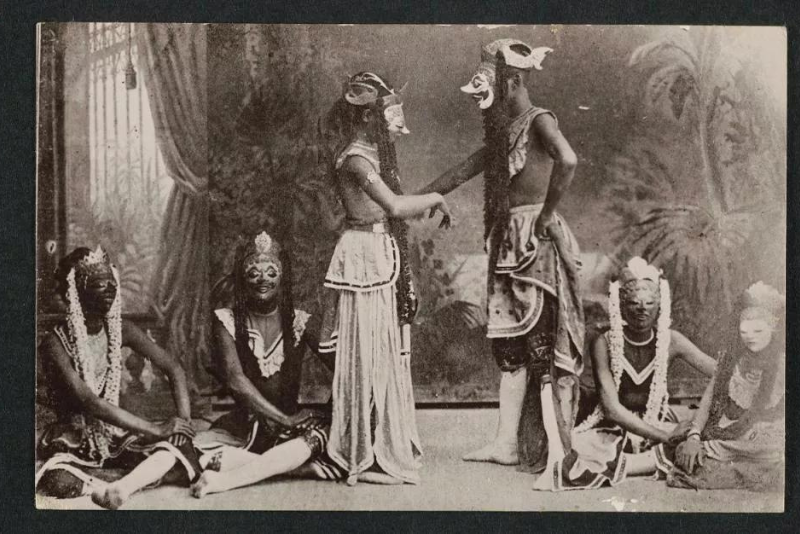
(Photo: Visit Kampong Gelam)
Outside on the field, beneath a towering banyan tree, passersby would gather to exchange words and treat themselves to piping hot satay and ketupat sold by roadside vendors.
Sadly, there were no remnants of the life that had existed in this area. Pondok Jawa was demolished in 2003 for urban redevelopment. The old banyan tree was taken down just last year after one of its major branches collapsed. All that remained were scattered trunks and branches salvaged from the tree, and solar panels, which were all held together by rusty steel rods.
This was actually an installation named VINES. It was put together by Chok Si Xuan, an artist inspired by all things tech and sci-fi. Initially, I was confused by the jumbled structure. But later, I learnt that the ruins told a story of how old ecosystems always give way to new ones.
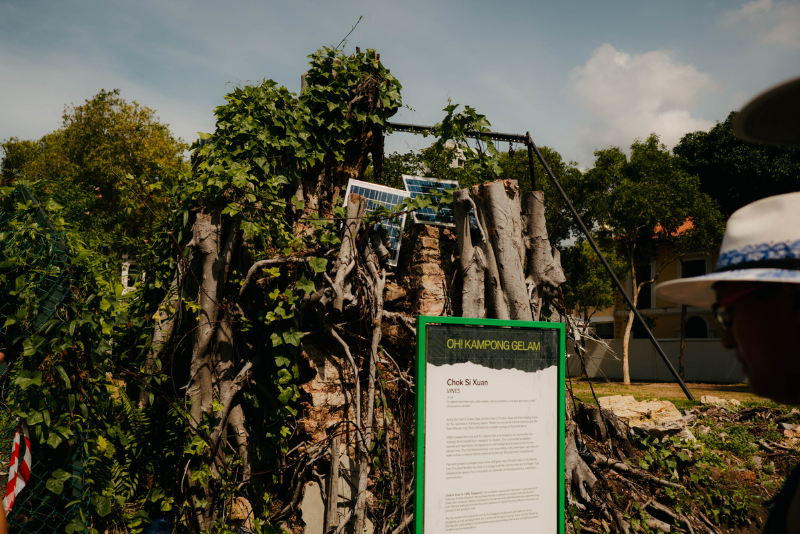
Although the field had to bid farewell to Pondok Jawa and the old banyan tree, it still supports the lives of newly planted gelam trees (see the picture above). Some onlookers have tried to tear off their fragile barks, but the trees stood resilient against irresponsible hands.
We then continued to our next stop, the famous Wardah Books. To get there, we walked through the vibrant Bussorah Street, which awoke all of our senses. There was the mouthwatering scent of Turkish cuisine, the voices of shopkeepers trying to coax passersby into patronising their stores, and the morning hubbub of cosy cafes. It was surreal to think that this was the same street that was once the heart of a thriving Malay print and press scene.
Sadly, today, you’ll no longer find many print-related businesses in the area. Wardah Books stands out as a sole testament to the neighbourhood’s intellectual and literary history. According to Mr Ibrahim, who is the founder, the bookstore is “a site of passive resistance” against commercialisation and modernisation, offering reads that are otherwise difficult to find outside.
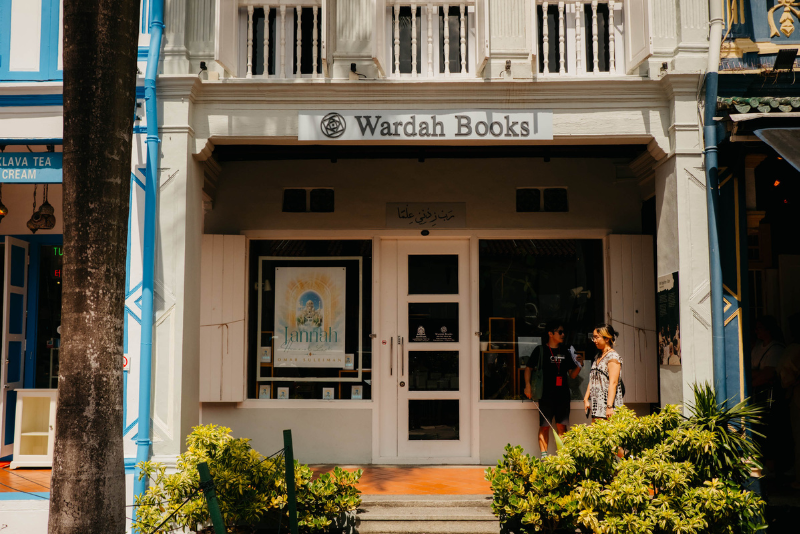
Before entering, I caught a glimpse of a shelf through the window that held small glass bottles filled with dark liquids, each labelled with ingredients. Beside each bottle lay a paper strip soaked in the respective liquids. The bottle with the darkest liquid read ‘charcoal ink, fruits + seeds’. I understood that these liquids were made from the same gelam trees we saw near Pondok Jawa.
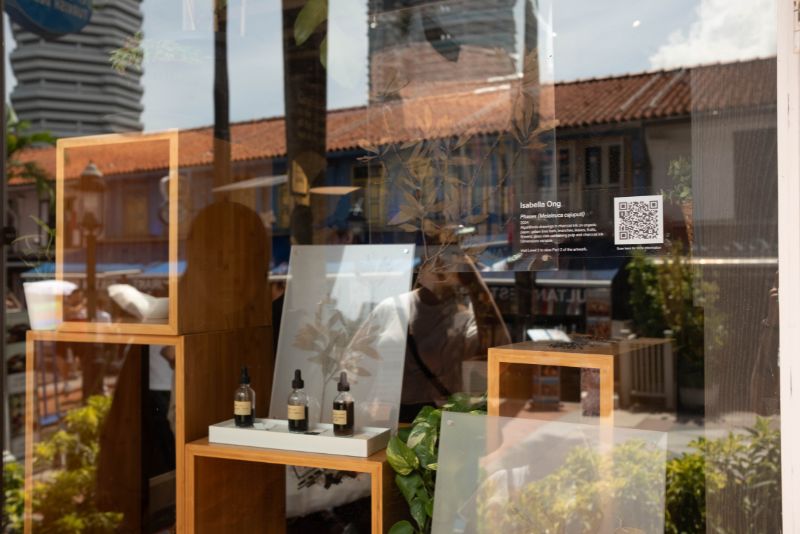
Upon entering the bookstore, we learnt that the liquids were part of an installation titled ‘Phases’. We also found paintings on bark paper made of gelam trees, drawn with the same inks that we saw in the little bottles. This installation showed the growth process of the gelam trees through algorithmic drawings. ‘Phases’ was artist Isabella Ong’s way of preserving the enduring strength of the gelam tree—and it was important that she used the tree’s inks for this. The concept behind the art took my breath away for a moment.
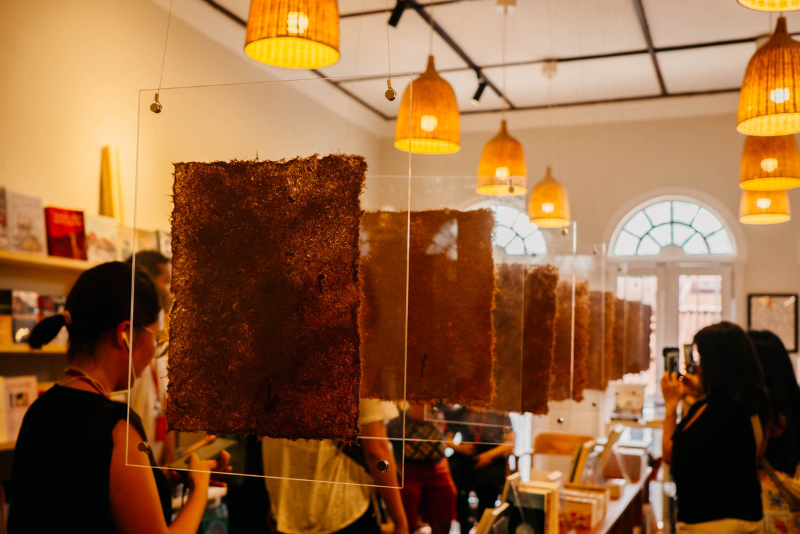
Next, we headed to an unassuming shophouse called MX’s Studio. MX is a watch designer and mixologist who moved to the studio in 2020. An ardent art connoisseur himself, he started the studio to do his part to contribute to the local art scene. He shared that the shophouse was built in 1828 and that 4 years later, he still enjoys the creaks of the old wooden floors, the scent and sun rays of Kampong Gelam oozing through the windows, and the prayer call from the Sultan Mosque.
We were treated to a captivating art piece titled ‘MA’ by Jane Lee. Jane created the art piece after hearing MX’s accounts and experience of Kampong Gelam. Using the studio’s cracks and crevices as her inspiration, she dug out a rectangular frame in a corner of the wall.
This was one of my personal highlights of the tour. The rectangular frame looked like a portal to a world beyond ours, with a warm glow emanating from behind the resinous layer. It was as if the piece was inviting us to uncover a hidden story.

As we moved on to our next stop, a bittersweet feeling washed over me. I had been so engrossed that I hadn’t realised how much time had passed. Our walk was almost coming to an end. But there was still one more place that I was looking forward to visiting—and that was Sabar Menanti, a nasi padang restaurant unfamiliar to none.
While we made our way to the restaurant, Koon Yen shared with us that Sabar Menanti (Malay for ‘wait patiently’) was once a humble pushcart that operated along Kandahar Street. It got its name from a visiting sailor who gave the owner a signboard engraved with the same words. The owner, Haji Marlian Athar, used the words to name his first brick-and-mortar restaurant.
Today, Sabar Menanti is run by his descendant, Iszahar Tambunan, who strictly follows the Minangkabau food tradition passed down from his great-grandfather.
We were welcomed with the aroma of fresh sambal, along with the pleasurable cacophony of the kitchen, and a gallery of family photographs and newspaper clippings of the restaurant. The various dishes that we walked past tempted me to give them a shot but because of the limited time we had, I had to hold back my cravings for another day.
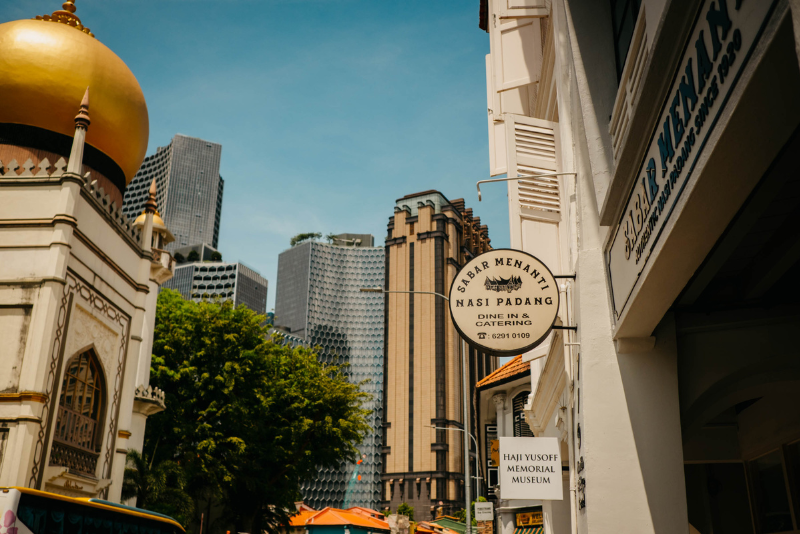
Upstairs, a blue tin hung from the ceiling by a thread. The ceiling was draped with cloud-shaped cloths that gave off an amber glow. The cloths had irregularly shaped pepperoni-like circles. How peculiar, I thought to myself.
It turns out that the artist, Ezzam Rahman, had bought the blue tin with the word ‘sabar’ (‘patience’ in Malay) during his trip to Yogyakarta, Indonesia. Then, as if fate had arranged, he was asked to craft an artwork for Sabar Menanti. The result was an interesting cascade of keropok-like shapes (Malay for crackers) from the blue tin.

The installation, named ‘I will patiently wait for us’, was a tribute to the artist’s late sister and a promise that he would wait patiently for the day they would reunite. It was an ode to enduring love, loss, and the cyclical nature of life.
As we reluctantly parted ways at the end of the journey, I felt a profound connection to the neighbourhood. From the unmissable banners at the Aliwal Arts Centre and the odd sense of nostalgia I felt at Pondok Jawa, to the poignant artwork at Sabar Menanti and the warm glow in the wall crack of MX’s studio, each stop gave me a deeper insight into the spirit and legacy of Kampong Gelam.
But this was just the beginning. The morning walk ignited in me a thirst to unearth more stories about the neighbourhood’s past. I truly hope that the generations to come will continue to value and preserve heritage sites like these in Singapore so that we can always remember where we came from.
Note: The OH! Kampong Gelam Art Walk is now closed. Explore OH!’s other ongoing programmes like New World’s End. This immersive audio experience follows a love story from the 1960s at the former New World End’s Amusement Park. Snag 50% off tickets from now until 14 July 2024.
Yours,
Zen
Trending articles
5
What's New

loop on our
latest updates,
promos, and weekly news.
The GetGo Blog
Get our latest updates,
promotions and weekly news.



